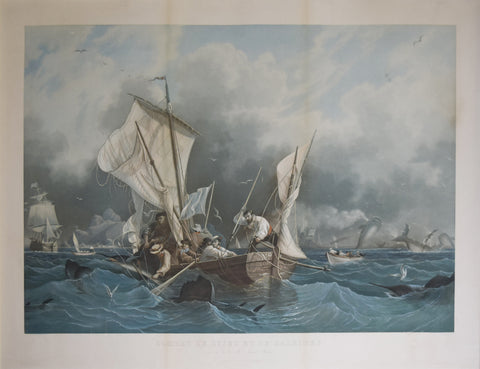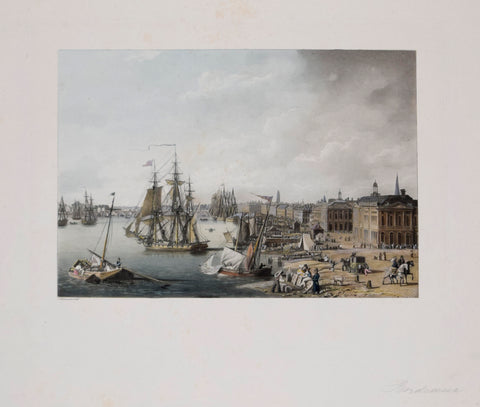Attributed to John James Wilson (1818-1875), British Man-O-War
Attributed to John James Wilson (1818-1875)
British Man-O-War
Watercolor on paper
Paper size: approx. 11 1/4 x 19”
Framed size: 17 7/8 x 25 7/8”
The evolution of paintings of marine subjects occurred quite suddenly in the middle years of the sixteenth century, owing its emergence directly to the Reformation and the release of men’s minds and spirits from the restrictions of choice imposed by the medieval church. This artistic flowering was initially confined to the Protestant Netherlands where wealthy merchants, who had made their fortune through fishing, whaling and the sea trade, eagerly sought paintings with marine subjects.
However, war with England during the summer of 1672, resulted in the blockade of the Dutch coastline and trade inevitable halted as did the patronage it supported. In an unusual move, Charles II of England invited Dutch painters to settle in Britain and their influence, not only to marine painting, quickly pervaded local arts. During the eighteenth century a fine school of marine painting became established in London and the city was to dominate the field throughout the nineteenth and twentieth centuries.
Born in London, John James Wilson was the son and pupil of the famed marine painter, John H. Wilson, RSA (1774-1855). Initially, he chose to depict genres other than that of marine, perhaps to avoid comparision with his more famous father. John James Wilson.s first exhibits were at the British Institution in 1834 and at the Royal Academy in 1835, and in neither did he show marine works. Indeed, it was not until 1849 that his marine paintings were publicly exhibited and therafter, until he ceased to exhibit in 1873, few were anything else. He died in Folkestone on January 30, 1875.
His watercolor of a British Man-O-War is typical of popular marine subject matter of the nineteenth century. The naval vessel with sails full is seen majestically battling through the tempestuous sea, as the crew bravely stand atop the masts awaiting their commands. Examples of John James Wilson’s work can be seen at several major British Museums including: the Folkestone Art Gallery, the National Maritime Museum, Greenwich, Graves Art Gallery, Sheffield and the Wolverhampton Art Gallery.
We Also Recommend








